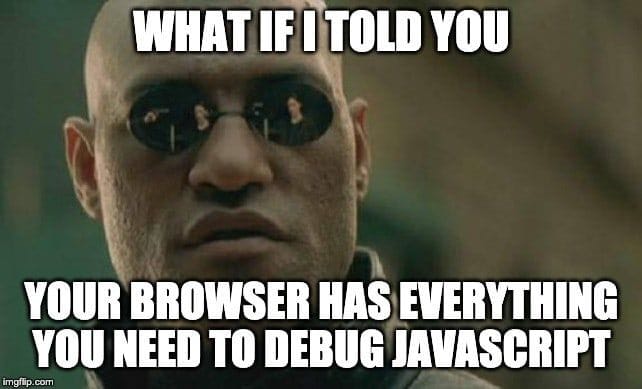How to debug JavaScript like a pro?

Pulkit Singh
Posted on January 5, 2023

Debugging is an essential part of the software development process. It involves identifying and fixing errors, or "bugs," in your code that prevent it from running correctly. JavaScript, being a dynamic and interpreted language, is particularly prone to bugs, but fortunately, there are many tools and techniques available to help you debug your code effectively.
Here are some common techniques for debugging JavaScript code:
-
Using the browser's developer console: Most modern web browsers come with a built-in developer console that allows you to view errors, log messages, and inspect the state of your application at runtime. To open the developer console in Google Chrome, for example, you can use the
Ctrl + Shift + Ikeyboard shortcut or click on the "Menu" button (the three vertical dots) and select "More tools > Developer tools."
-
Inspecting variables: The developer console allows you to inspect the values of variables at a given point in your code. You can use the
console.log()function to log the values of variables to the console for inspection. For example:
let x = 10;
console.log(x); // Output: 10
Stepping through code: Most modern browsers also come with a "debugger" tool that allows you to pause the execution of your code at a specific line and inspect the state of your application. You can use the "Step Over" and "Step Into" buttons to execute one line of code at a time and see how the variables and function calls are affecting your application.
Using breakpoints: A breakpoint is a marker that you can set in your code to pause the execution of your code at a specific line. You can set a breakpoint by clicking on the line number in the developer console's source code viewer or by using the debugger; statement in your code.
let x = 10;
debugger; // Execution will pause here
let y = 20;
- Catching exceptions: JavaScript provides a try-catch statement that allows you to "catch" exceptions, or runtime errors, and handle them gracefully. For example:
try {
// Code that may throw an exception
} catch (error) {
// Code to handle the exception
}
Here's an example of how you might use the try-catch statement to debug a runtime error:
try {
let x = y; // y is not defined, so an exception will be thrown
} catch (error) {
console.log(error.name); // Output: "ReferenceError"
console.log(error.message); // Output: "y is not defined"
}
These are just a few of the many tools and techniques available for debugging JavaScript code. With practice and patience, you can learn to identify and fix bugs effectively and become a more efficient and effective developer.
In conclusion, debugging is an essential part of the software development process, and JavaScript, being a dynamic and interpreted language, is particularly prone to bugs. Fortunately, there are many tools and techniques available to help you debug your JavaScript code, such as using the browser's developer console, inspecting variables, stepping through code, using breakpoints, and catching exceptions. By becoming familiar with these tools and techniques, and with practice and patience, you can learn to identify and fix bugs effectively and become a more efficient and effective developer.

Posted on January 5, 2023
Join Our Newsletter. No Spam, Only the good stuff.
Sign up to receive the latest update from our blog.





